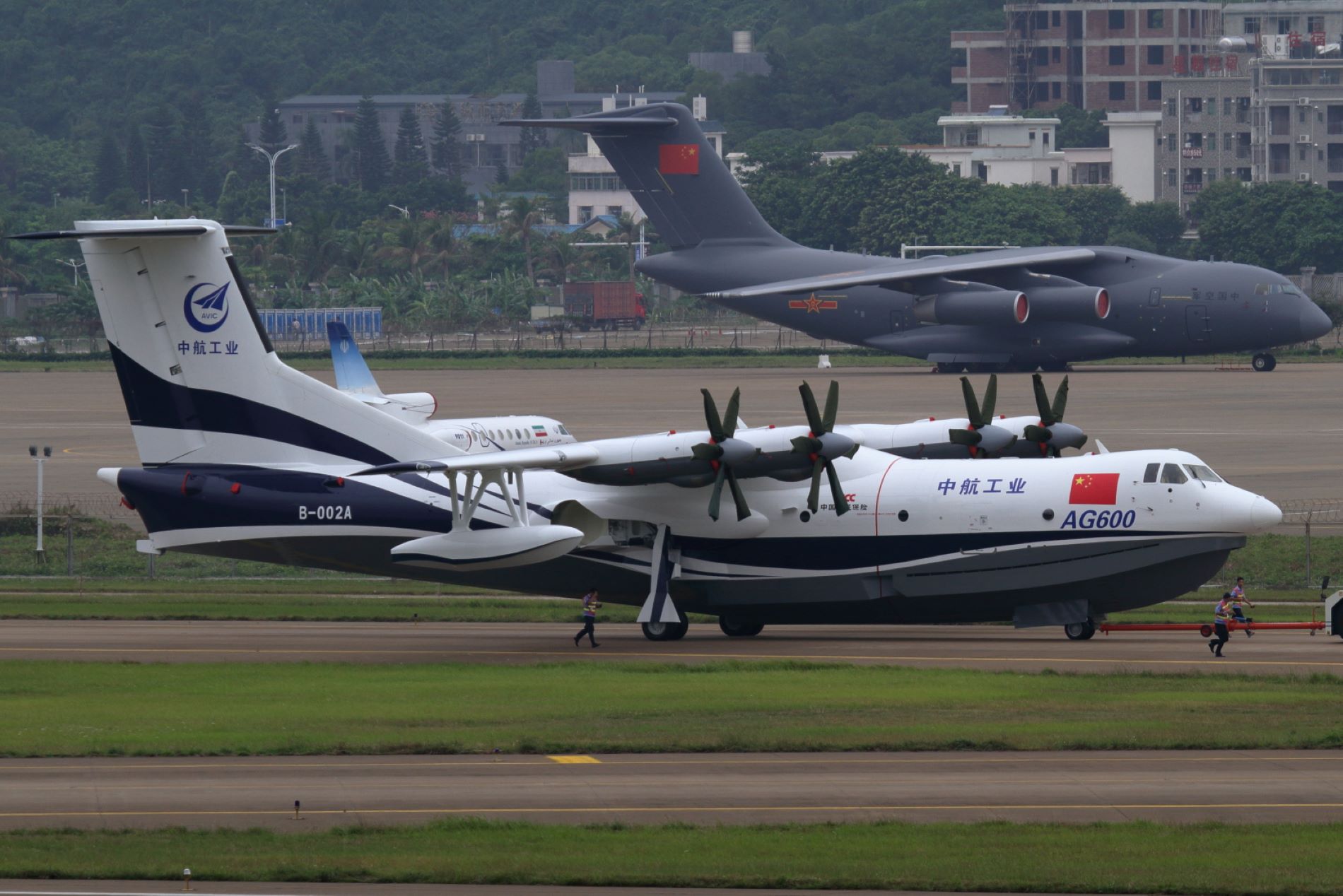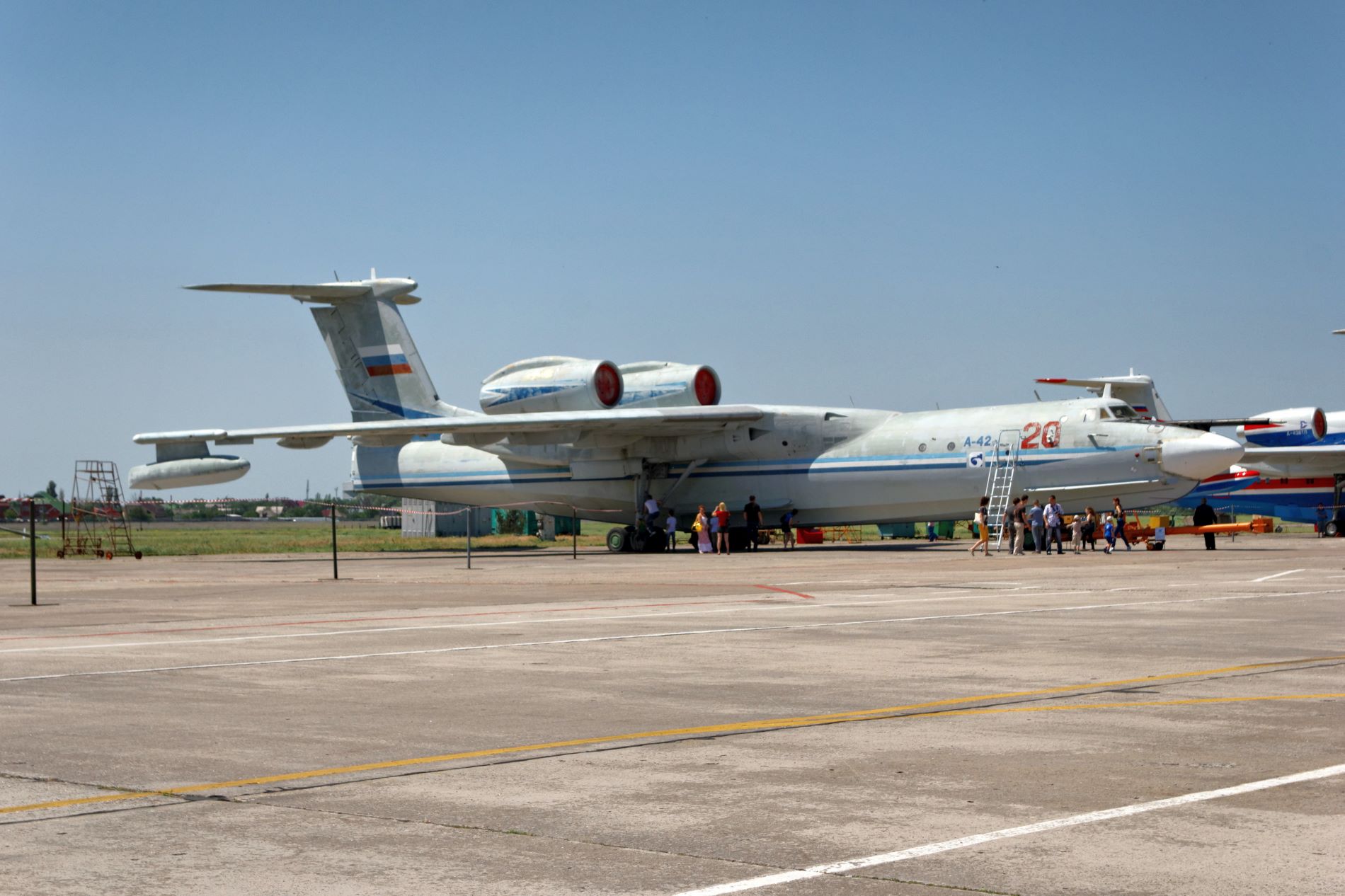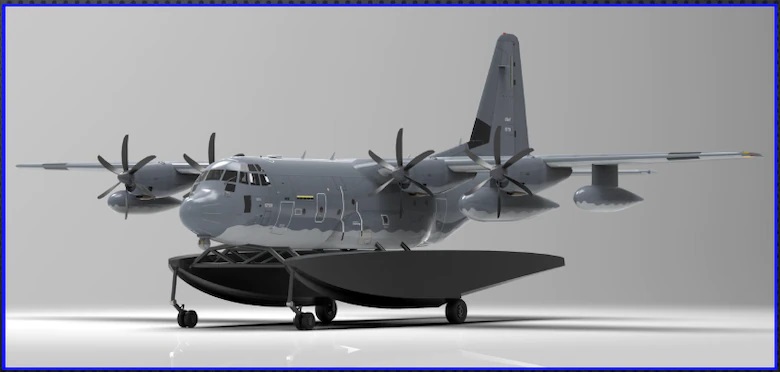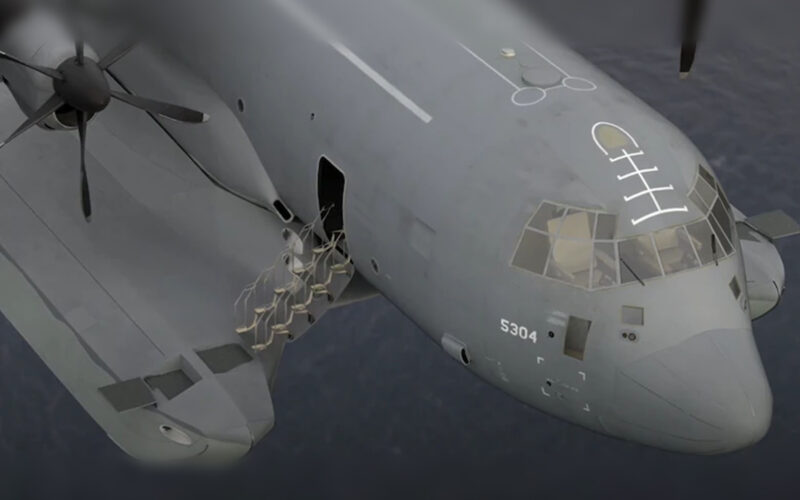The idea of converting the Lockheed C-130 Hercules into a seaplane is almost as old as the aircraft itself. The first proposal was issued in the 1960s and reimagined the Hercules as a flying boat. Later, these ideas became focused on adding floats to the plane, which prompted many unusual proposals. However, none of these reached fruition.
Not only is the C-130 one of the world’s most-produced transport aircraft, it may well be the most versatile military aircraft ever used.
At various points during its almost seven decade-long career, variants of the C-130 were created to perform nearly all roles undertaken by aircraft, including ground attack, reconnaissance, airborne early-warning (AWACS), electronic warfare, maritime patrol and search and rescue.
Some Pakistani sources have claimed that during the 1965 Indo-Pakistani War some C-130s were installed with anti-aircraft guns, conducted special air superiority missions and were responsible for downing several Indian jets. These claims are unconfirmed but, if we choose to believe them, we can also add combat aircraft to its list of roles.
In September 2021, the US Air Force Special Operations Command (AFSOC) announced its intentions to build a version of the Hercules that included floats. It is a shame, AFSOC’s press release implies, that such a versatile aircraft is still unable to land on water, which makes up 71% of the planet’s surface. National strategic objectives have become more focused on coastal regions. So, it would be logical to have the capability for rapid deployment there.
The Hercules that will be modified is the MC-130J, the version designed for delivering, extracting and supplying special operations soldiers. AFSOC’s capabilities would be greatly increased if the aircraft could be used in the new way. Furthermore, the airframe can be adapted for any purpose, so it could also be ordered by other services and used for other tasks.
AFSOC first included the development of the seaplane on its procurement list back in spring 2021, and confirmed the project in September. It was also announced that, owing to the active use of the latest digital design technologies, the aircraft will be ready to fly before the end of 2022, which is a record amount of time. Presumably, mass production will follow shortly after.
Curiously, the service did not provide an explanation for the urgency. Why, when earlier proposals were ignored, is the US now in need of such an aircraft? And where exactly is it going to be employed? However, these are not difficult to deduce.
The Kunlong
In July 2020, Aviation Industry Corporation of China (AVIC) test-flew the AG600 Kunong, a seaplane that, according to the company, would be a great addition to many rescue and firefighting efforts.
The international community remained unconvinced by such claims, as the new flying boat, powered by four turboprops and capable of carrying at least 12 tons (26,000 pounds) of cargo, would also be perfect for delivering, extracting and supplying Chinese ambitions in the South China Sea.

AG600 Kunlong seaplane. (Image: Alert5 / Wikipedia)
Referring to the sea as a ‘hotspot’ in contemporary geopolitics is an understatement. Despite international laws, a decision of the UN’s Permanent Court of Arbitration and protests from neighboring countries, China continues to claim almost the entirety of the sea as its own, and does not hesitate to brandish its military might in the region.
Between a host of small islands, land reclamation projects and the island of Taiwan (which the People’s Republic of China claims as its own), there is a vast expanse of coastline where seaplanes can be used effectively. During conflict, the ability to disregard airports and land airplanes at any location and at any time offers a great advantage. Original military seaplanes from the early 20th century were designed with this in mind and saw widespread use until WWII. However, the proliferation of military airfields, the increased range of land-based aircraft, new types of aircraft carriers and the widespread use of helicopters eventually rendered them obsolete. Now, we regard images of seaplanes as relics from the past.
But fixed-wing aircraft tend to be much faster and more efficient than helicopters. They can carry more payload and boast a greater range. Despite being heavier and slower (due to massive floats they have to carry), seaplanes outperform rotorcraft in all respects. Additionally, military infrastructure is not particularly well developed in the South China Sea and, what little is present, can be destroyed or captured.
While designers insist that the AG600 was developed with civilian use in mind, it is hardly surprising that the aircraft was associated with the situation in the South China Sea. China already employs a large seaplane of its own, the Harbin SH-5, which was introduced in the 1960s. There were seven produced, but only one is used for firefighting, the rest (disregarding the three prototypes) are employed by the Chinese navy.
Following its maiden flight, Chinese media claimed that the AG600 was the largest seaplane in existence. This is widely disseminated by Western journalists. However, this statement comes with several caveats. For example, many WWII-era seaplanes, such as the famous Hughes H-4 Hercules, were much larger and heavier. There are two 1944-vintage Martin JRM Mars in Canada, in an arguably operational state. Compared to these aircraft, the AG600 is rather modest in size. Nevertheless, one of the Martins was used to train Chinese pilots prior to the first flight of the Kunong.
Then, there is also the A-40 Albatross.
The Albatross
The A-40 is the largest jet-powered seaplane ever to be built. It is also slightly larger than the AG600 and substantially heavier. It was designed in the 1980s in the Soviet Union by the Beriev bureau, intended to become the company’s masterpiece and a successor to a long line of Beriev flying boats.
After a few test flights and world records in the late 1980s, the two A-40 prototypes suffered a similar fate to many other ambitious Soviet projects and were left to rust in their hangars. The economic collapse experienced by a newly-capitalist Russia saw an end to any further development.

One of the prototypes of the A-40 (Image: Alexxx1979 / Wikipedia)
But in 2014, United Aircraft Corporation (UAC) announced that it has resumed the development of the Albatross. In 2016, the Russian Navy revealed that it would replace the outdated Be-12 with the new seaplane by 2020.
As with many other projects, deadlines seemed to mean little. However, in 2019, a slew of news stories emerged, including a confirmation that the project is ongoing, the announcement of a new name, the Be-24 Albatross, and more details about the modernization of the aircraft. It was going to be produced in a limited series (approximately a dozen) and supplement an existing fleet of smaller Be-200s.
The Be-200 Altair, a scaled-down version of the A-40, has been in production through the 2000s and was a heavy presence in firefighting efforts in both Russia and abroad. While its best-known for dropping tons of water on burning wildlands, the aircraft, much like its older sibling, has been designed with other uses in mind.
In particular, Beriev’s jet-powered flying boats were intended for maritime patrol, reconnaissance and anti-submarine warfare. According to Russian officials, both aircraft will perform these roles when adopted into the navy. Both aircraft will also be deployed in Russia’s Far North.
The Arctic is, in many regards, similar to the South China Sea. It is a geopolitical nightmare and a potential warzone between great powers. Here, the airfield infrastructure is also poorly developed and there is plenty of shoreline.
It is highly probable that an arms race in the Arctic spurred Russia to resurrect its seaplane projects, just like an arms race in South China Sea likely became a catalyst for the development of the AG600. The C-130 seaplane is quite an obvious response to both of those challenges.
The Hercules
Owing to some nifty digital design, there is a high chance that the C-130 will be adopted by the US military before the AG600 or the Be-42 reaches their respective armed forces. It is also likely that, in contrast to its competitors, the American design will be widely exported. NATO and its allies seems like a ripe market for such a plane.
There is also a large civilian market for the Hercules seaplane, especially if it can be adapted for firefighting roles. It promises to be much more capable than any similar design, and, barring any new developments, will become the largest and heaviest operational seaplane. As it is, essentially, a modification of an already existing design, it could also be more affordable than other models.
The Hercules also marks a turning point in what can be referred to as the ‘seaplane renaissance’. Other seaplanes have been developed in recent years, most notably the ShinMaywa US-2, a Japanese quad-engine turboprop introduced in 2007. But the speed and vigor with which major powers rushed to develop their own water landing-capable aircraft is unprecedented. This highlights a significant change in attitude.
Two geopolitical hotspots, the South China Sea and the Arctic, have spurred the resurrection of an almost-forgotten idea. What follows is a surge of ideas that, if implemented, are going to be very interesting to observe indeed.

A render of the C-130 on floats (Image: US AFSOC)
This article was first published on October 2, 2021.

